Tuesday, 22 August 2023
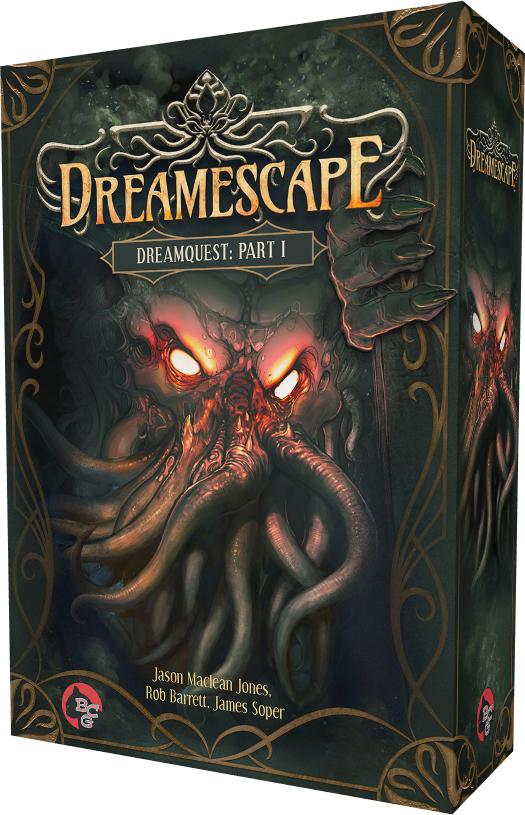
The egg of the idea for DreamEscape came about mostly during three years of playing Chaosium’s Call of Cthulhu roleplaying game. It was a custom campaign written and mastered by our long time Mythos guru James. Although based solely in an alternative version of post WWII Scotland and France, it started me thinking how each of the set pieces were like scenes from a film yet to be made. As is often the case in the RPG, diligent investigators must return to the ‘scene of the crime’ to re-look at the evidence from other/new angles, preferably with new clues and insights – leading their deductive capabilities down different paths. In essence it was like a web of information held together by specific locations or events.
That thought bubbled around my head like the extrusions of Yog Sothoth and got me thinking how best to translate such a process of repeatable encounters into an easily succinct and digestible format for a tabletop game.
As students we were lucky enough to live in a flat that contained the complete collection of Fighting Fantasy adventure books by Steve Jackson and Ian Livingstone.
We thus spent many many hours getting lost down tunnels and dying to large white snakes when we should have been revising! The simple but effective format of these choose-your-own-adventure games stuck with us into adulthood.
In addition, I’m a huge fan of heavily thematic narrative boardgames, those that actually dive deep and tell a story rather than claim to be story-driven yet only drop a scant line or two of situation before requiring the player to spend tokens or roll some dice.
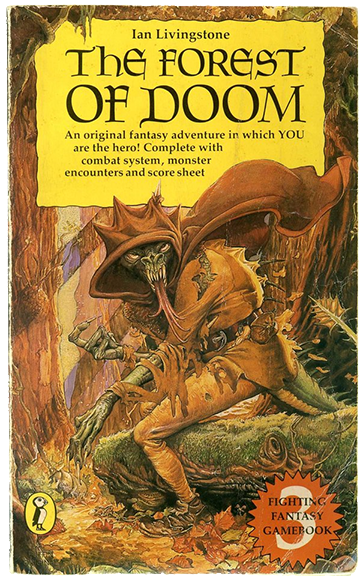

For me the most excellent Arkham Horror boardgame by Richard Launius and Kevin Wilson did this well, providing a strong sense of unknown adventure with more detailed ‘encounters’ that wove interesting (and often bizarre) stories.
For example, in one game of AH, as Cthulhu rose like a spectre of madness above the streets of Arkham, my man Ashcan Pete tore through downtown on his motorcycle, drove through a collapsing building and dove headfirst into the loathsome Great Old One, blasting his shotgun into its face. (Note: I don’t recommend this as a sensible course of action. It did not help much but was an exciting way to die nonetheless !).
Another more modern narrative game is Sleeping Gods by Ryan Laukat where the players spin out their own stories based on where their seaborne travels take them. Initial designs for DreamEscape were strongly influenced by Z-Man games’ classic Tales of the Arabian Nights by Eric Goldberg.
In one tale, I was forced to buy a slave princess for the Grand Vizier, got almost eaten by cannibal bandits while taking her back through the desert, spent months silently desiccating in a forgotten oubliette only to escape to rob a merchant caravan in the dead of night, then return in style and riches to Baghdad, married the princess only to be finally turned to ash by an angry Djinn I had double-crossed way back early in the adventure !
What worked in Arabian Nights was how changes to your character early on in the game could trigger unexpected specific encounters or effects much later in the game. This was a strong design goal when we began work on DreamEscape.
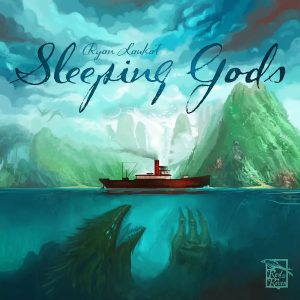

Of course we must also mention the recent excellent Tainted Grail: Fall of Avalon by Awaken Realms, which developed a deep and intriguing storyline by linking a series of explorable locations that could be revisited again and again in different chapters.
This mechanism was partly responsible for spawning our Keycode system (see below) that soon developed to be the secret heart of DreamEscape.
Another recent game, 7th Continent by SeriousPoulp was similar to Tainted Grail in that it used geographical cards to present an unfolding map as the players explore. Although this greatly adds to table presence and immersion in the world, we could not use a similar visual mechanism since i) the game is set in a dreamworld where realms and locations are not fixed geographically, ii) being primarily a solo experience, there was no need to track character positions on the board, iii) there was no room on the story cards to contain part of a map as well as unique artwork, narrative and detailed choices.
Another major issue for us was the traditional use of a large book to tell the stories, and the fact that once printed, the story was fixed and could not evolve. So we dumped the book in favour of large story cards that would retain the depth of story in a format that could be easily expanded upon with future scenarios, expansions and card packs without changing the core game experience.
The criteria for a unique (or at least a very different game) therefore were that
— the experience had to be card driven (with the character sheet providing the focus for the player tableau (playing area)
— the story had to evolve both through card play, through decision making and by card interactions
— maximum replayability and discovery of the underlying novella story through multiple plays
— thematically strong following the narrative style of Cthulhu mythos novellas – while also maintaining a roleplay-like experience
The style of writing was an easy one to solve as we had been reading Weird Fiction for years. The style of these stories is most often through a narrator, either the primary or secondary protagonist who details the events and circumstances in the story from a very personal perspective. We chose to follow this rather unusual style (for boardgames at least) rather than the standard ‘game speaks to you, the player’ style (‘You lift the lid of the well to find a giant white snake coiled within. What do you do?’)
This narrative tool opens up a lot of interesting ways to engage the player by combining visual storytelling with more introspective monologue options that spin the standard storygame format in new and exciting ways. After all, you the player are inside the head of the dreaming character, making the decisions for them and listening to their mind talking as they react to the dreamworld around them.
Replayability in a story-driven game comes from offering the player different ways to approach and overcome each event and encounter; their decisions tailored by the resources that they have on hand. The phenomenon of ‘repeatable dreams’ we experience as humans immediately lent itself to firming up the concept of replayability – Only through repeated gameplay and making different choices each time will the player pick up the various narrative clues to the story puzzle presented and allow them to piece together the route to escape the dream and win the game.
Part of the fun of every roleplaying game is the collection of gear/equipment/magic items and artifacts, or hidden lore/spells or knowledge that gives the characters the edge later on. In Dreamescape we took this fundamental requirement further by making many of the Item and Lore cards a necessary prerequisite to winning the game; effectively ‘locking’ advancement in the story behind certain ‘key’ components. This became the Keycode system.
Many secret alternative storylines and major clues to the mystery are present on the story cards. These ‘keycodes’ (a combination of a unique
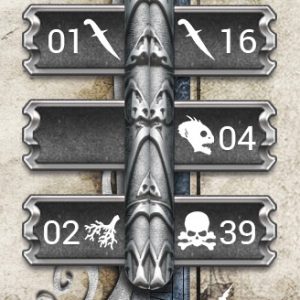
icon and a numerical code, like a hidden paragraph in a choose-your-path storybook) are initially locked. They can be unlocked only if the icon on a story card can be matched to the same icon on an Item or Lore card. The complete number then reveals the unique numerical code for an alternative story card that can be chosen by the player instead of the current story card. In the example shown here, keycode #0116 would be a valid alternative story code whereas #0239 would be incorrect.
The six keycode spaces on each story card therefore allowed us to maximise the functionality and card interaction between every card component, allowing us to evolve the game by inserting future keycodes into current story cards (future proofing the game). These future codes would only be revealed and become useful in future expansions of the Dreamquest story arc game series.
In part 2 of the Designer Diary series we will delve into the gorgeous graphical design of the game and show how both the game mechanisms and visual style complemented each other through the design process.

Wednesday, 24 April 2024
BadCat Games & All About Games Consulting New Licensing Partnership BADCAT GAMES Limited (BCG) and ALL ABOUT GAMES CONSULTING (AAGC)…Read More

Tuesday, 22 August 2023
Designer Diary Part 1: Origins First Comes the Egg The egg of the idea for DreamEscape came about mostly during…Read More

Tuesday, 18 June 2019
We talk black chalk, spoon music and ancient civilisations! We had the great pleasure recently of talking at length with…Read More
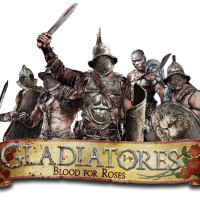
Monday, 27 May 2019
Gladiatores In celebration of the launch of Gladiatores on kickstarter we will be giving away a full CHAMPION (Deluxe) level…Read More
You must be logged in to post a comment.